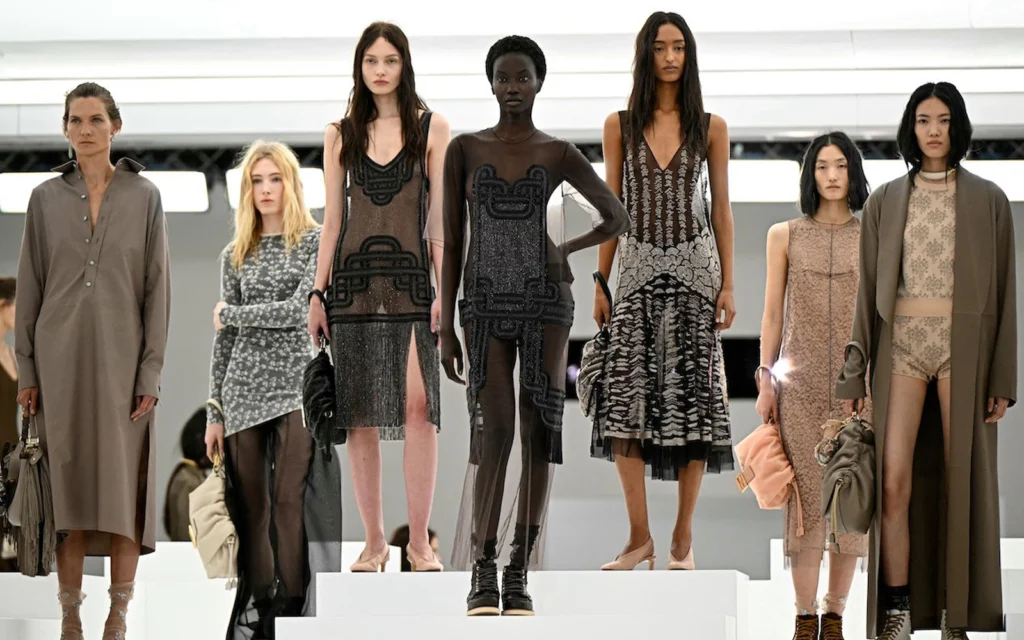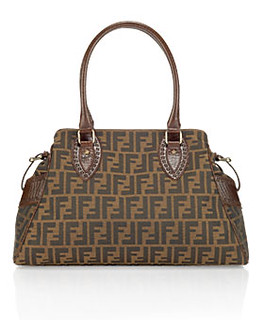One of the most well-known and highly regarded luxury fashion brands in the world, Fendi has become known for its fine leather goods and fur craftsmanship, as well as its high-end clothing and accessories. The brand was established in 1925 in Rome and has an extensive history of working with some of the most prominent designers in the business. This is an in-depth exploration of the brand’s background, iconic pieces, partnerships, and influence on the fashion industry.
Table of Contents
1. History and Founding (1925–1940s)
- Adele and Edoardo Fendi started a fur and leather business in Rome, Italy, in 1925.
- The brand began as a small family enterprise that produced leather and fur items and was known for its craftsmanship and innovative designs.
- In the 1930s and ’40s, Fendi had established itself as one of Italy’s leading furriers and leather artisans.
2. Evolution and Partnership with Karl Lagerfeld (1960s)
- Karl Lagerfeld: In 1965, Karl Lagerfeld was appointed as the creative director for furs and later ready-to-wear at Fendi, which resulted in the brand’s evolution into a luxury global brand. His creations revolutionized the perception of fur by making it more shiny, wearable, and lighter.
- The Double “F” Symbol: Fendi’s “FF” (Fun Fur) symbol, designed by Lagerfeld in 1965, would ultimately come to define the company. The logo is still a timeless design that is recognizable internationally.
- With their “shaved,” “dyed,” and “reversible” furs, Fendi modernized the fur industry under Lagerfeld, expanding the material’s adaptability and freshness.
3. The Growth of Fendi (1970s-1990s)
- In the 1970s, Fendi expanded outside Rome and set up shops in major cities across the entire world.
- Beginning with ready-to-wear clothing in the year 1977, the company progressively branched out into accessories, shoes, and fragrances.
- Baguette by Fendi: Fendi’s iconic piece, the “Baguette,” became available in 1997. Created by Silvia Venturini Fendi (granddaughter of the designers), it was a cult favourite, and one of the first “It bags” in fashion history.
- The Baguette was designed to be worn under the arm like a French baguette because of its small dimensions and short strap. It appeared in the TV show Sex and the City and became a huge break.
4. The Acquisition of LVMH in the 2000s
- Fendi started to grow worldwide after the luxury big LVMH (Moet Hennessy Louis Vuitton) gained the majority of the business in 1999.
- Building on its heritage of fur, leather, and high fashion, Fendi expanded its global presence, especially among regions like Asia, by leveraging LVMH’s resources and network.
- Lagerfeld’s impact on the brand was maintained after his death in 2019. Silvia Venturini Fendi takes over the brand as creative director, following on and conserving the house’s traditions.
5. Signature Products
The product line for Fendi is vast, but it’s renowned for:
- Fur and Outerwear: Fendi is still the best-known brand of luxury furs. Even as the fashion industry continues to ditch fur, Fendi has managed to reinvent the fabric with new methods in an effort to fit the modern market.
- Leather Goods and Handbags: The company is known for its high-quality leatherwork. In addition to the Baguette, other must-have bags include:
- The Peekaboo bag, released in 2008, became yet another Fendi favourite.
- The 2Jours and 3Jours tote bags.
- Shoes and Accessories: Fendi’s shoes, sunglasses, and jewellery all have high-concept designs that frequently feature the FF logo and other house details.
6. Fendi’s Presence in Fashion
- Haute Couture & Ready to Wear: Fendi has always appeared at Paris Fashion Week and has a reputation for their runway designs. The house likes to experiment with textures, colours and new methods, especially when it comes to outerwear and accessories.
- Fendi often partners with artists, designers, and celebrities to create limited editions. For example:
- In 2019, Fendi partnered with Nicki Minaj for the “Fendi Prints On” series.
- Fendi also collaborated with visual artists and designers on capsule collections that combined fashion and art.
7. Sustainability and Discussion
- In recent years, Fendi has faced criticism, primarily from animal activists, for its continued use of fur. However, the organization has also responded by highlighting ethical production practices and the fine craftsmanship of its furs.
- As the fashion industry as a whole has placed an increased value on sustainability, Fendi has been investigating ways to obtain ethical materials and reduce production waste.
8. Modern Era and Innovation (2020s Onwards)
- Kim Jones Appointment: Fendi appointed Kim Jones as artistic director of womenswear in 2020, with Silvia Venturini Fendi still in charge of accessories and menswear. Jones, who had previously worked at Dior and Louis Vuitton, brought a new outlook to the brand.
- Digital and Virtual Fashion: Like most luxury brands, Fendi has taken the digital path and made virtual runways, launched exclusives online, and tried out various new fashion technologies.
- Fendi is also on board with the streetwear and athleisure movement, which carries more sporty elements into its designs, where luxury is mixed with street style.
9. Cultural Impact
- Fendi is also prominent in popular culture. In addition to the association with Sex and the City, where the Baguette bag became an instant cult item, models such as Rihanna, Beyoncé and Kanye West have all worn Fendi.
- Fendi is also an architect and designer, collaborating on such projects as the restoration of Rome’s Palazzo della Civiltà Italiana, which is now Fendi’s headquarters. Its involvement in the arts speaks to the brand’s dedication to integrating fashion with wider cultural and artistic initiatives.
10. The Fendi Family Legacy
- Even after the LVMH acquisition, the Fendi family is still deeply involved in the company. Silvia Venturini Fendi remains the most active family member now at the house, and her management, especially in accessories, has done its best to preserve the brand’s heritage while pushing it forward.
Final Words
One of the most famous luxury fashion houses in the entire world is Fendi. The company has managed to stay in step with fashion’s changing trends while maintaining genuine to its genuine traditions as a company that has established its reputation on handcrafted leather and fur creations. Under the direction of Kim Jones and Silvia Venturini Fendi, the brand is still expanding globally and providing its consumer base with contemporary elegance.









